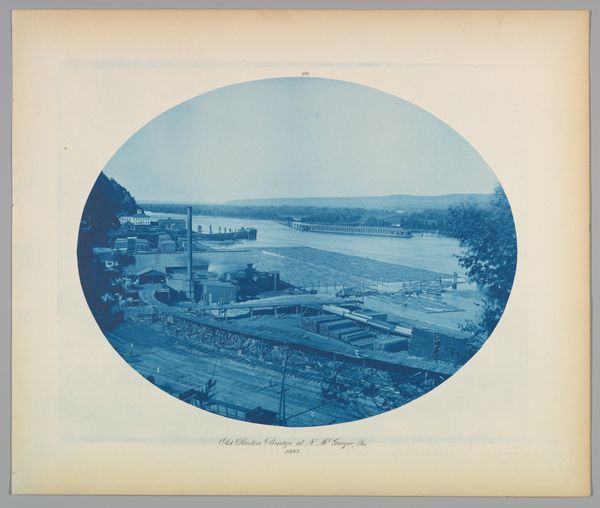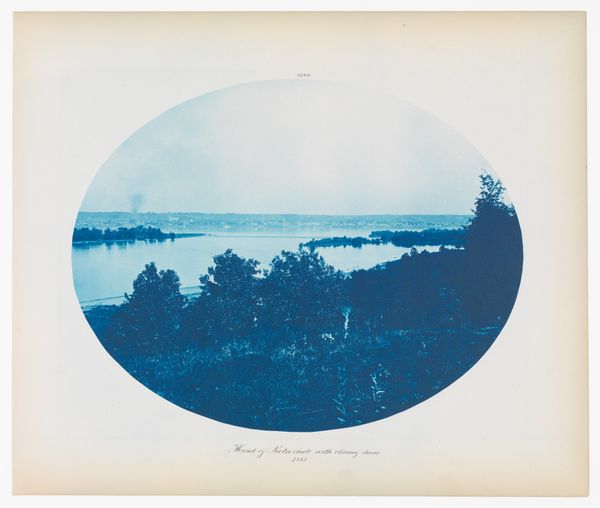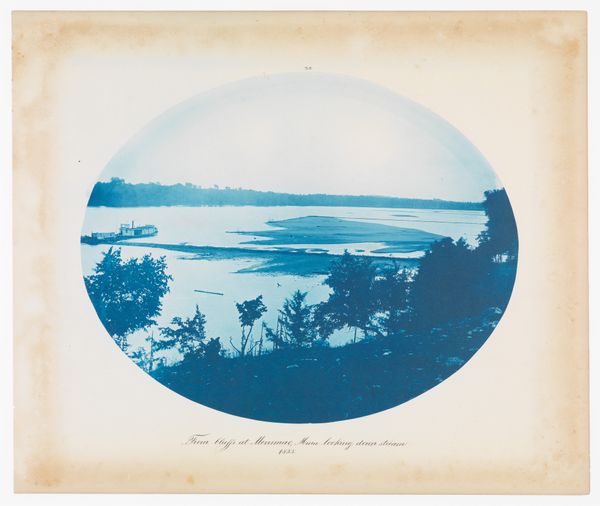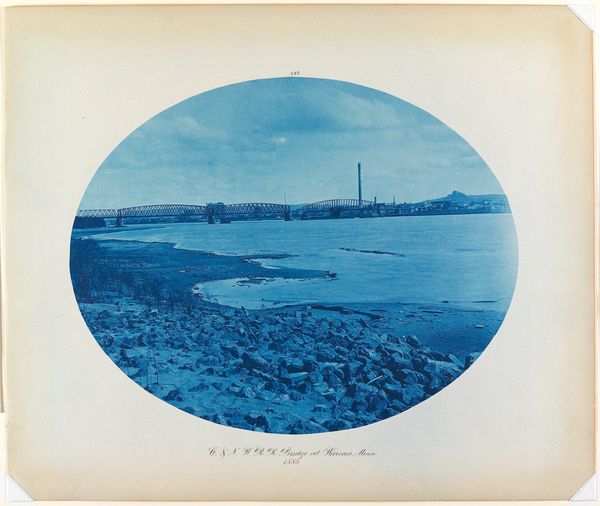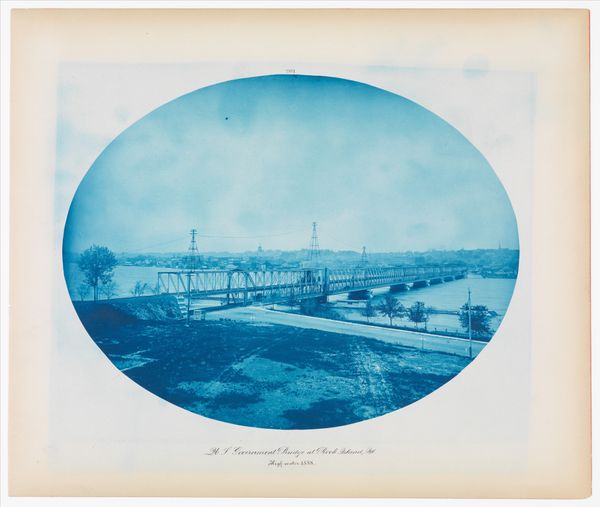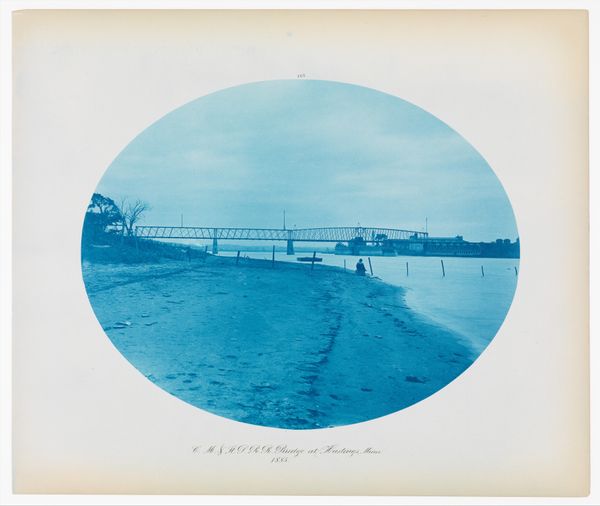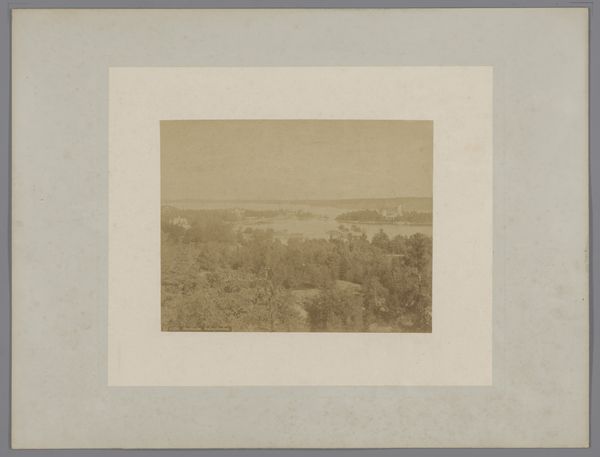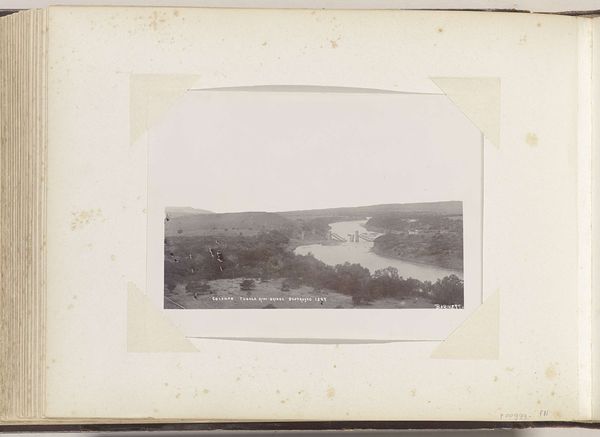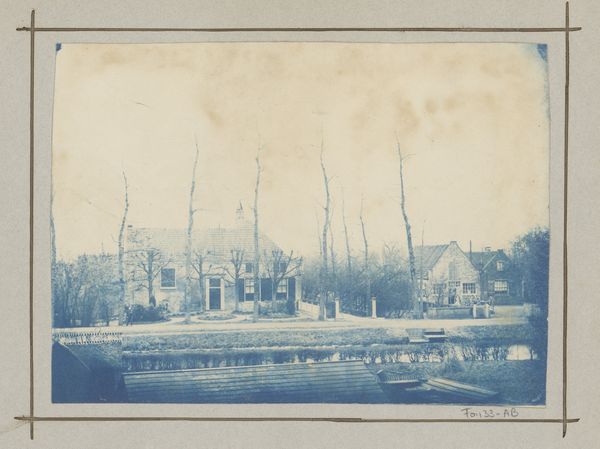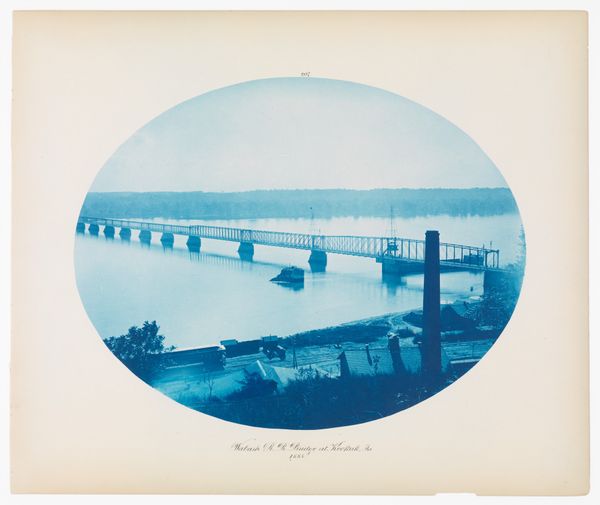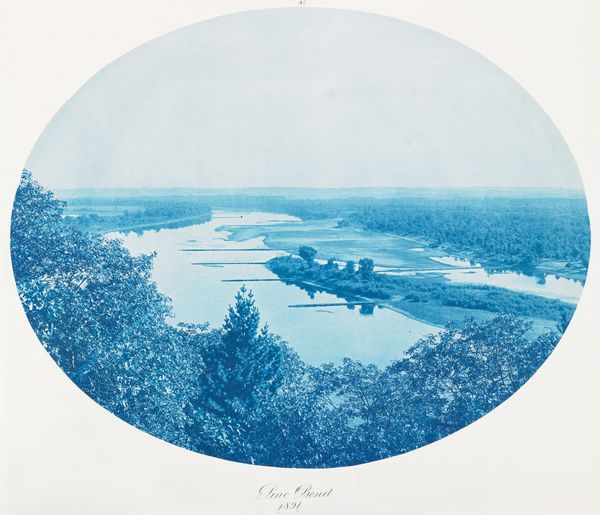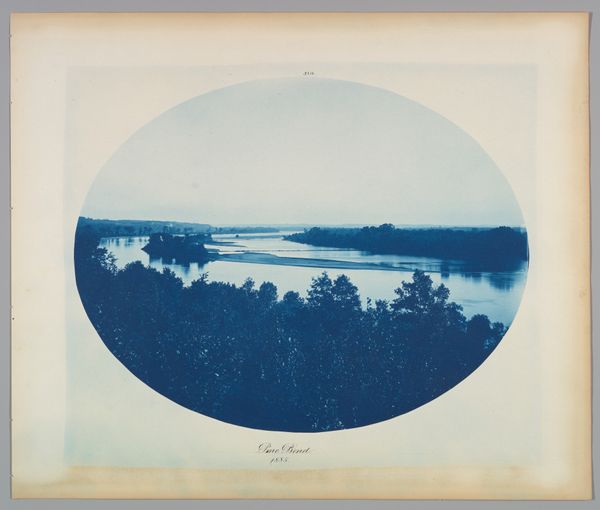
print, cyanotype, photography
# print
#
landscape
#
cyanotype
#
photography
#
cityscape
#
realism
#
building
Dimensions: Sheet: 14 1/2 × 17 3/16 in. (36.8 × 43.7 cm)
Copyright: Public Domain
Curator: Looking at Henry Bosse’s “No. 155a. Lower Lock Des Moines Rapids Canal” from 1891, it’s striking how dreamlike it feels, despite being a very factual depiction. It's a cyanotype print. Editor: Cyanotype, huh? The blue gives it an immediate sense of nostalgia, a lost world. Makes me think of old blueprints. Is it the photographic process giving that wistful air? Curator: Partly that, and partly the subject. We're seeing the tail end of the industrial revolution shaping the landscape and lives along the Mississippi. Bosse was actually a cartographer and draftsman for the US Army Corps of Engineers, so he wasn't an "artist" in the traditional sense, though his prints wound up in museums, which is delicious. Editor: So it was basically documentary photography done with a beautiful process, a sort of proto-photojournalism then? You know, it makes you consider the laborers, the canal builders—did they ever pause to consider their world might become an object of such calm, cool reflection? I guess their hard labor is invisible here. Curator: It is, isn’t it? You're completely right. We see the product, the lock system itself, the train cars waiting, and some boats maybe but not the people who moved the goods or built the thing! The focus feels much more on place itself, this convergence of nature and mechanical ingenuity. The composition with that perfect oval makes you look through a little window into history and wonder about progress and where we find beauty. Editor: The cyanotype lends a uniform almost egalitarian feel too – dissolving difference perhaps—a utopian wash over industry that is at least to me—bittersweet. I’m interested in the commodification of images too—the print sold in museums as opposed to used in the industrial complex…it is all a very neat bow tied on production I’d say. Curator: Agreed, agreed. Well, that’s certainly given me some fresh perspectives; thanks! Editor: Anytime. It’s good to connect art’s past to our very tangible present.
Comments
No comments
Be the first to comment and join the conversation on the ultimate creative platform.

